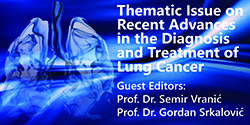Medical futility treatment in intensive care units
DOI:
https://doi.org/10.5644/ama2006-124.169Keywords:
Intensive care unit, Medical futility, End-of-life, Decision making, EthicsAbstract
Objective. To investigate cases of potential medical futility treatment in intensive care unit (ICU). Materials and Methods. Retrospective review of 1567 charts of patients treated during the three-year period (2012 - 2014) in the ICU of the University Hospital Centre Split, Croatia, was conducted. More detailed analysis of the deceased patients’ (n=429) charts was performed to identify cases of potential medical futility treatment. There were 99 patients for which ICU treatment was questionable due to their low Glasgow coma scale (GCS) score. For those patients types and duration of treatment were analyzed. Results. Among patients who were treated during that period, 27% had died. Treatment of 99 patients (6.3% of the deceased) was considered a potential medical futility. Mean age of those 99 patients was 68±14 years and the mean stay in the ICU was 14±11 days. They spent 1302 patient days in the ICU, of which 52% days they had GCS 3 score. They were treated with catecholamines during 40% of the patient days. Minimal therapy was provided during 44% of the patient days. Conclusions. Analysis of the deceased patients’ charts in the ICU indicated that a certain percentage of patients did not need prolonged ICU treatment. Instead, they were supposed to be treated in a palliative care unit. To avoid medical futility treatment in ICUs, palliative care unit needs to be established, as well as protocols for determining medical futility cases and ethical committee that will decide which patients will be
transferred to palliative care.






